10 On-Page SEO Tips to Boost Your Rankings Quickly
Are you tired of navigating the ever-changing landscape of Search Engine Optimization, and struggling to outrank your competitors in the game? You’re not alone. But fret not! It’s time for a game-changer. These tips are like a secret weapon unlocking doors that were once impenetrable, transforming websites from invisible to invincible overnight! Ready to shoot up the SERPs with rocket speed? Dive into these powerful tips and watch as your online presence flies through the ranks.
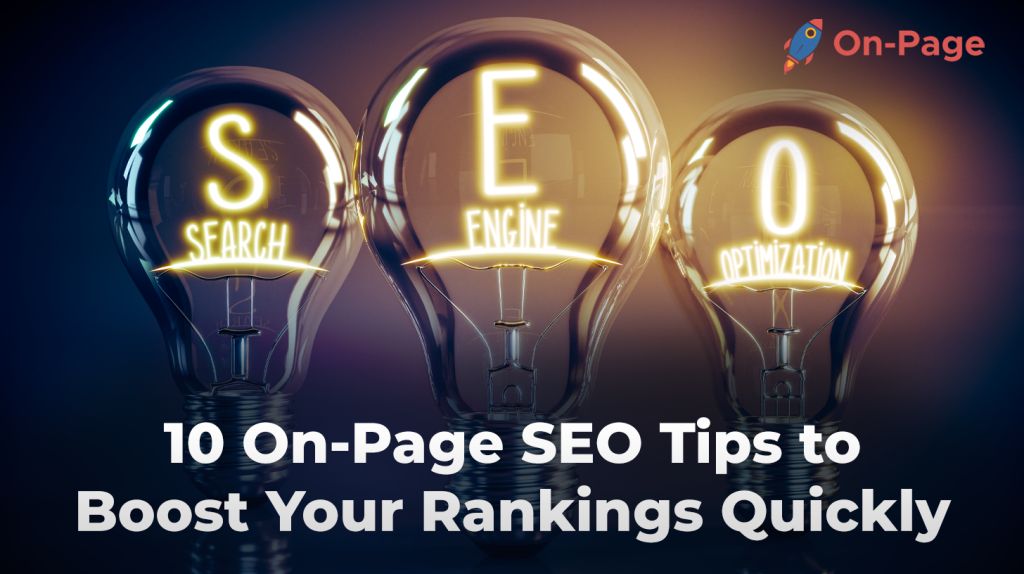
There are several ways to improve your on-page SEO, including optimizing your content with targeted keywords, improving your page speed and mobile-friendliness, using descriptive and compelling meta tags, and incorporating multimedia elements such as images and videos. Our website offers a comprehensive On-Page SEO Checker tool that analyzes your website’s weaknesses and provides specific suggestions for optimization, including keyword targeting, backlink opportunities, technical issues, and user experience.
On-Page SEO Techniques
When it comes to on-page SEO, there are several factors that can have a significant impact on your website’s ranking. These techniques involve optimizing different elements on your website such as title tags, header tags, keyword placement, content length and readability, image optimization, internal linking strategies, and URL structure.
For instance, creating high-quality and helpful content is arguably one of the most crucial techniques in on-page SEO. A website with valuable content provides users with a positive experience and encourages them to spend more time on the site. Additionally, search engines consider the relevance and quality of the content when determining ranking positions.
Another important factor in on-page SEO is optimizing header tags (H1-H6) and keyword placement. Header tags provide structure to the page by highlighting main topics and subtopics while providing a clear hierarchy for both search engines and visitors. Proper keyword placement within these headers along with the meta description can help search engines understand what each page is about accurately.
However, many people get caught up with stuffing their pages with keywords or making sure they have a perfect keyword density ratio. The truth is that focusing excessively on keywords can have adverse effects on your website’s ranking. Keyword stuffing not only hurts user experience but also results in penalties from search engines if detected. Instead of trying to trick search engines with an artificially boosted keyword density ratio, it is vital to focus on creating high-quality content that answers users’ queries and satisfies their intent.
Think about it this way: Google wants what’s best for its audience. For example, imagine you’re looking for a new pizza place nearby while on vacation. Would you appreciate a list of ads that all say “pizza” 50 times but don’t truly match what you want? Probably not. You would likely prefer a list of local pizza restaurants that have good reviews near your area. Google’s algorithm aims to provide users high-quality results that best answer their queries.
Ultimately, On-Page SEO techniques are the first steps in an effective online marketing campaign. By consistently practicing these techniques, it’s possible to optimize your website for search engines and improve your visibility online.
Title Tag Optimization
Title tags are one of the most crucial on-page SEO elements; they provide a brief description of what your webpage is about. Along with the meta description or snippet, this information appears in search engine result pages (SERPs). They assist with a user’s click-through rate by drawing them into the website. Optimizing title tags is relatively straightforward as long as you understand how they influence organic search results.
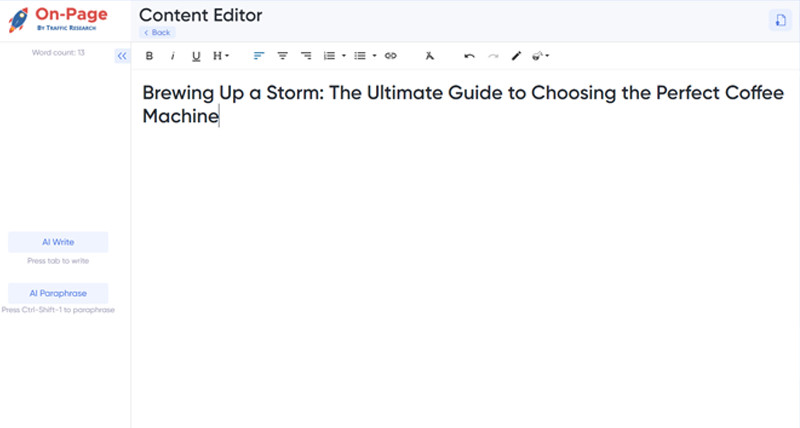
One critical factor when optimizing title tags is making sure they’re relevant to the page’s content. The title tag should provide a clear and concise overview of what users can expect on the webpage. For instance, if you’re running an online bookstore, you want to make sure each product page has a clear and specific title tag. A title like “Book Title – Online Bookstore” would be much more effective than just “Online Bookstore.”
Furthermore, it’s recommended to keep your title tags under 60 characters to ensure they appear fully in SERPs. This applies not only to desktop searches but also to mobile devices since they have less screen space available. As such, it’s crucial to adjust your titles to fit different devices so that users can view them comfortably.
While including keywords within your titles might seem obvious to ranking higher, going overboard with keyword stuffing in the title tag could hurt ranking instead of helping it. Focusing on creating helpful and well-written titles that accurately reflect what users will see on the page should be prioritized overloading it with too many keywords.
Think about a book’s cover; it provides a brief summary of the author’s intended story while providing hints about what you could expect inside. The title tag should be treated similarly. It’s important to provide users with an accurate idea of the webpage’s content, while simultaneously encouraging them to visit that page.
By creating clear and concise title tags, your website will be more likely to rank well in search engine results pages. By following best practices in on-page optimization, such as updating existing content and utilizing the On-Page.ai SEO checker, it’s possible for your website to experience continuous organic growth over time.
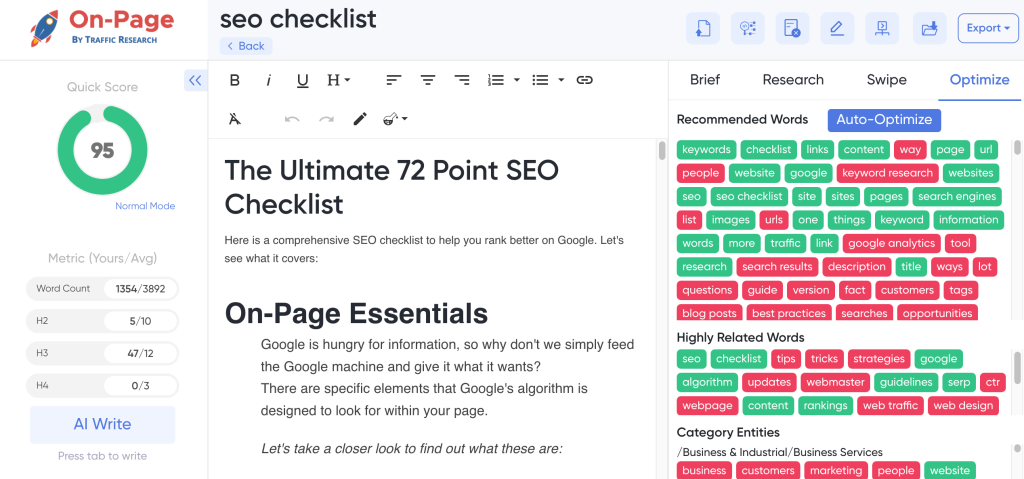
- According to a 2020 study by Backlinko, the average Google first page result contained 1,447 words, suggesting that longer content tends to rank higher in search engine results.
- A 2018 study by Moz revealed that pages in the top 10 search results incorporate the targeted keyword within their title tag 71% of the time, demonstrating its importance for on-page SEO.
- Visual elements improve on-page SEO performance. Research by Searchmetrics shows that webpages ranked in the top positions have an average of seven images or multimedia elements included.
Header Tags and Keyword Placement
Header tags, also known as H1, H2, H3, etc., are an essential aspect of optimizing your website’s on-page SEO. Header tags are used to break up content into sections and give structure to the page. They provide context for both users and search engines about the main topics covered on the page. The placement of keywords within your header tags is crucial for ranking higher in SERP. Here are tips and strategies for header tag optimization:
The first step is deciding on the right keyword phrase for each individual header tag, based on what you want that section of the content to rank for. For instance, if we’re optimizing a blog post about “On-Page SEO Techniques,” then our h2 header should include a keyword like “On-Page SEO Techniques,” so Google knows this section covers that topic.
That being said, it’s important not to stuff your header tags with too many keywords. Overuse of keywords can result in a penalty from Google as it may appear spammy or manipulative. Instead, focus on writing relevant headers that cater to the user’s intent.
Once you decide on a relevant keyword or phrase for your header tags, it’s important to place them strategically in your content.
Think of header tags like a book’s chapter titles; they break the content up into different sections and explain what each chapter will cover.
While some SEO experts argue that using multiple H1 headings per page negatively impacts ranking, others believe that it doesn’t cause any issues as long as it makes sense and provides value to readers.
Lastly, make sure to use all levels of header tags appropriately. H1 headers should only be used once per page, typically for the title or main heading. H2 headers should be used for the main sections or sub-topics, and H3-H6 headers can be used to break up content further.
Content Length and Readability
The length of your content plays a significant role in both user engagement and SEO rankings. Pages with high-quality, relevant content that provide solutions to the user’s search intent tend to rank higher on Google. In recent years, Google has shifted its focus towards providing users with valuable and informative content that is easy to read. Here are some tips on how to optimize your content length and readability:
Having long-form content (around 2,000 words) that provides value to users has proven to outperform short-form content (less than 1,000 words). Longer articles typically provide more in-depth information, provide greater value to the reader, and have a better chance of being shared by other websites.
Think about it from a reader’s perspective; if you perform a Google search for a specific topic, you want the most useful information provided in one place without having to sift through multiple sources. Long-form content offers readers the most comprehensive solution and satisfies their search intent.
Additionally, readability is crucial in optimizing your website’s on-page SEO. Well-written content that is easy to read, flowing naturally, with short paragraphs and sentences improves user experience.
One way to achieve this is by using bullet points, numbered lists, and subheadings throughout the article. These tactics give structure to large amounts of text while making it easier for readers to scan for pertinent information.
While longer pieces may offer extensive information, it’s important to note that not all readers have the time or patience to read a 2,000-word article. That being said, shorter articles can still hold valuable information as long as they answer the user’s search intent.
Based on your target audience and user intent determine if shorter or longer-form content is best suited for your website. Keep in mind that readability must be prioritized regardless of the length of your content.
Image Optimization and Multimedia
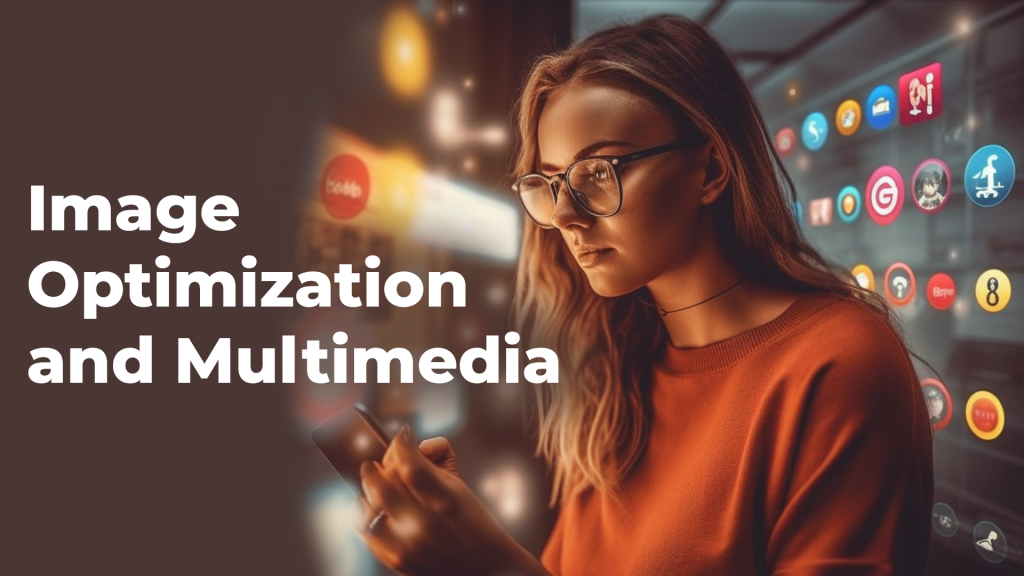
When it comes to on-page SEO, optimizing multimedia elements such as images and videos can often be overlooked. However, considering these elements can make a significant impact on your website’s ranking. Here are some tips for proper image optimization that will help boost your rankings quickly.
First and foremost, it is crucial to use high-quality images sized appropriately to avoid slowing down the page load speed. Large-sized images increase page load time, which negatively impacts the user experience as well as SEO ranking. Ensure that all images are compressed and saved in WebP format without compromising their quality.
Including relevant keywords in the file name and alt text of images is equally important. Search engine crawlers cannot see images but read alt texts to determine if they are relevant to the webpage content. Hence, make sure your alt text contains relevant and descriptive keywords that match the content of the page.
Additionally, captioning images not only provides context but also adds value and readability to your content. Furthermore, captions are an additional opportunity to include targeted keywords.
While including keywords in image file names and alt text is important for SEO, stuffing them excessively would do more harm than good. Ensure you maintain a balance between relevant keywords used in image optimization and don’t overuse them in a way that looks spammy.
Think about your website as a cake- while all ingredients have individual importance in making that delicious end product; they come together collectively to create something special. Similarly, employing proper multimedia optimization techniques in isolation may not achieve desirable results unless the overall on-page SEO strategy itself stands strong.
Now that we’ve covered some tips for proper image optimization let’s move on to using alt text and captions.
Using Alt Text and Captions
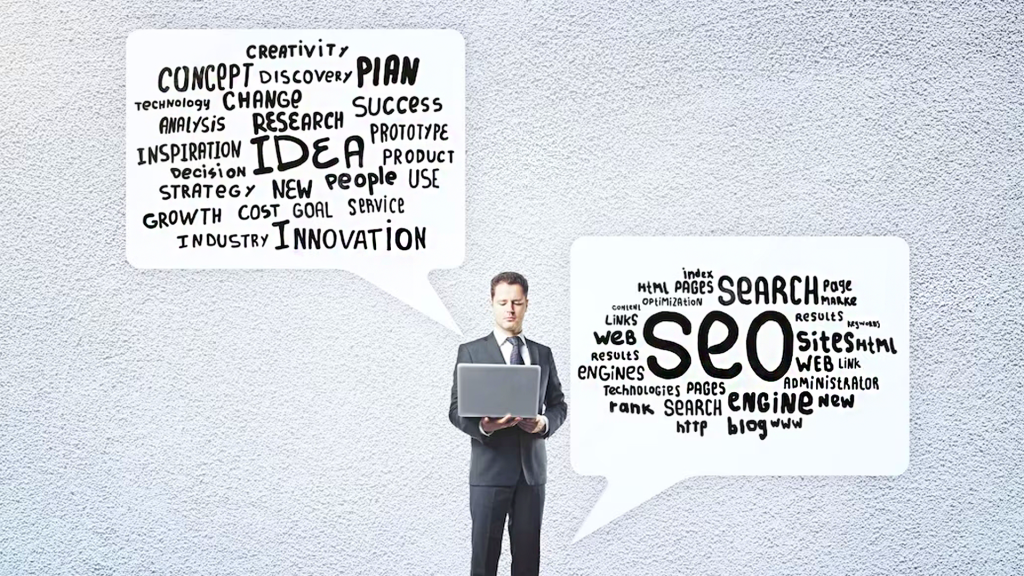
Alt text is used by search engines to understand what’s within an image. It’s the text that replaces the image in instances where an image can’t be loaded due to slow internet speeds or when an individual is visually impaired. Captions, on the other hand, refer to a block of text that describes the image and is displayed below or beside it.
Crafting proper alt text is crucial because it influences how search engines crawl your site and subsequently rank it. Alt text should never be left blank, and each image should have unique alt-text attributes, preferably containing relevant keywords.
Despite its importance, keyword-stuffing alt text will negatively affect your SEO efforts. You’ll harm both user accessibility -such as screen readers used by visually disabled individuals- along with SEO rankings by upsetting Google’s guidelines for proper SEO strategies.
Furthermore, crafting well-written captions presents itself with opportunities to provide context, add value, and often include targeted keywords while at it.
There has been some debate in recent times over whether captioning images positively impacts on-page SEO. While there may not be any direct link between having captions and ranking higher, studies show that adding captions can increase social media engagement resulting in a higher visibility rate among the target audience.
Think about captions as putting the icing on a cake – just like icing isn’t necessary for a cake to be enjoyed thoroughly, yet serves the purpose of making it more appealing to taste or sight. Similarly, while it may not directly affect SEO rankings, incorporating proper multimedia elements can significantly improve user experience and social media compatibility.
Internal Linking Strategies
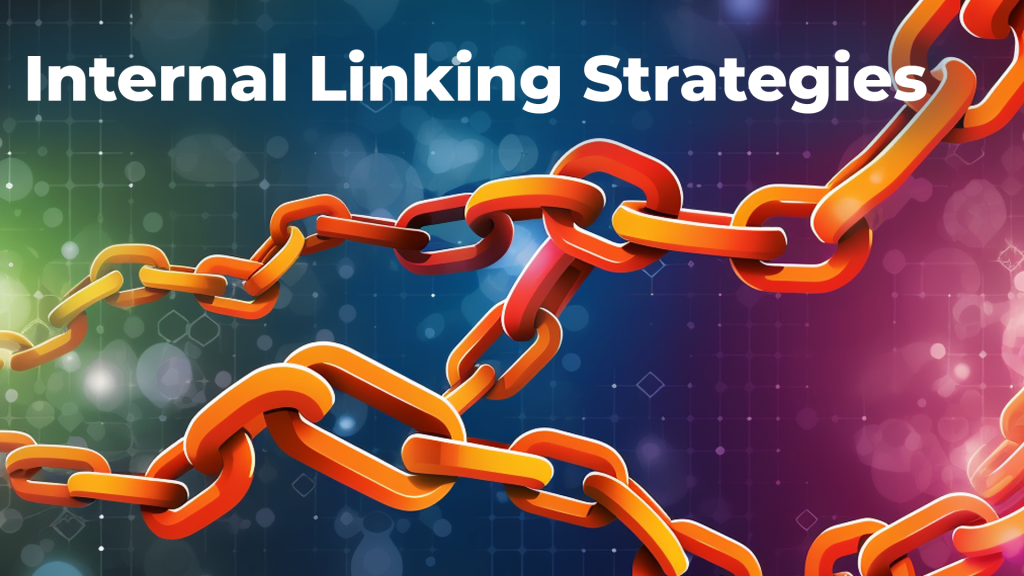
Internal linking is a crucial aspect of on-page SEO that involves linking the pages within your website to other relevant pages on your site. This helps Google crawl and index the pages more easily, and it also helps users navigate through your site. Here are some internal linking strategies you should consider:
1. Create a Hierarchical Structure: Consider your website as a tree and organize it with the most important information of your website at the top level. By doing so, you will be creating a clear hierarchical structure that directs the users to the information they need easily.
2. Content Relevance: You should relate every link to the content of the page they are being used on, for providing optimal user experience. The anchor text should be closely related to what is linked, and also keep in mind that you don’t want to “overdo” internal links – they should feel natural.
3. Avoid Overloading Pages with Links: While internal linking is crucial, it’s important not to overload your pages with too many links – this can distract users from the main purpose of the page and also dilute the importance of each link.
4. Use Navigation Menus: Navigation menus make the search easier for users while helping search engines understand content hierarchy. They should include high-priority pages or sections and make use of descriptive terms.
5. Internal Linking as Customer Service: If you think about internal linking as a way of serving customers by directing them exactly where they want to go, you’ll naturally lean toward creating helpful, effective internal links without getting bogged down in trying to optimize them for SEO purposes alone.
Anchor Text Best Practices
Anchor text is the clickable text within a hyperlink that leads to another page on your website or external websites. Proper anchor text can significantly impact your SEO strategy, here are some of the best practices:
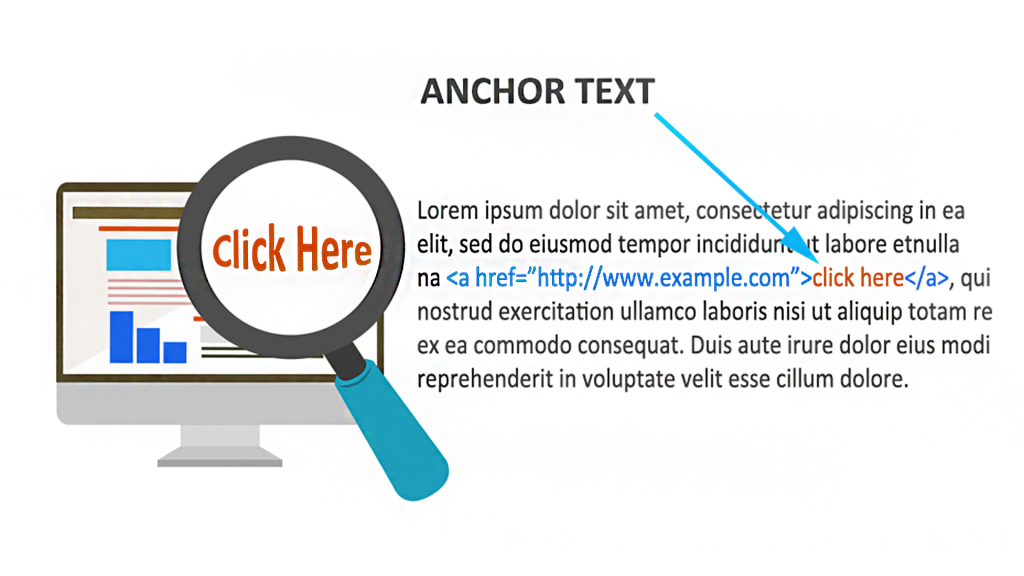
1. Use Relevant Phrases: Anchor text should be relevant to the destination page so that users will know what they are clicking on and also search engines know what topic is being linked. For example, instead of a generic “Click Here,” try something like “On-Page.ai’s SEO Services.”
2. Avoid Over-Optimization: Over-optimization can lead to penalization by Google’s algorithm as it may consider the overuse of certain phrases for boosting ranking as spammy. Instead, use long-tail keywords and phrases.
3. Be Natural: The use of unnatural anchor text looks spammy not just to users but also to search crawlers, and you could get hit with penalties. So make sure you mix things up by using different anchor text variations, such as branded anchors, related keywords, or naked URLs.
4. Match User Intent: When it comes to anchor text optimization, matching user intent should always be the top priority – use helpful terms that users would naturally click based on their search query.
5. Anchor Text as Guideposts: Think about anchor text as guideposts helping your users navigate through your site and discover new information. Good anchor texts read almost like road signs along an informational highway.
By implementing these anchor text best practices as well as our previously discussed internal linking strategies, you will significantly increase your website’s usability, navigation, and rankings on SERPs.
Structuring URLs for SEO
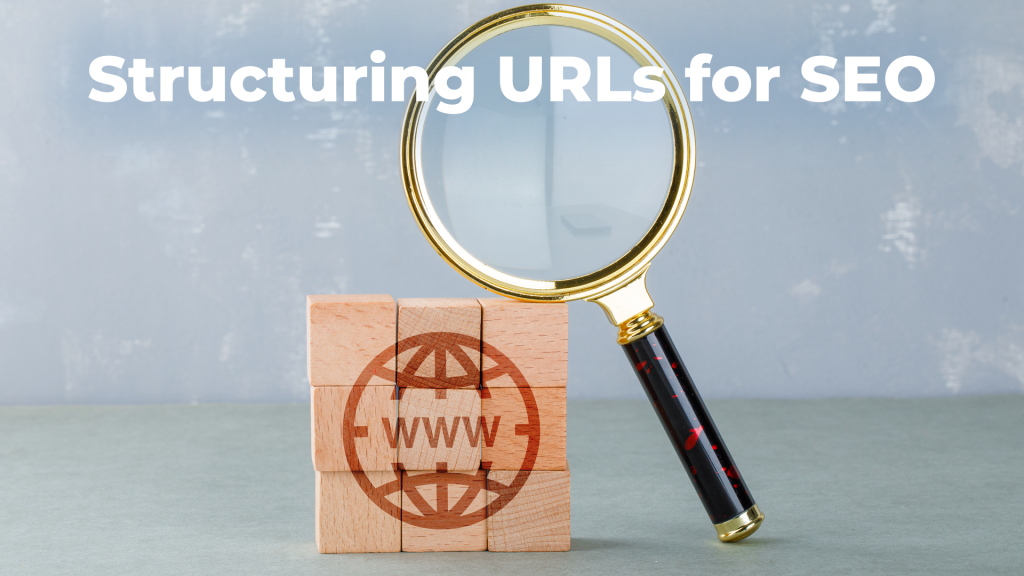
URL structure is an essential aspect of on-page SEO that can directly influence your website’s search engine ranking. Follow these best practices for structuring URLs for SEO and give search engines a clear understanding of what the webpage is about.
For example, imagine you run a blog about nutrition. Instead of a URL like “www.yourwebsite.com/1234-article-description,” use a URL such as “www.yourwebsite.com/nutrition/benefits-of-eating-fruits-and-vegetables”. The latter provides more context to both users and Google about the content on the page, which may lead to better search visibility.
Another crucial aspect of structuring URLs is using hyphens (-) as separators between words instead of underscores (_). Using hyphens gives users an easier-to-read URL and helps search engines read each word as a separate entity.
Some people argue that using underscores in URLs doesn’t matter much in today’s SEO landscape due to improvements in Google’s algorithm’s ability to parse out keywords correctly. While it may be true that Google can interpret underscores correctly, other search engines might not. Therefore, it’s always best to follow industry best practices and use hyphens whenever possible.
URL Length and Keyword Inclusion
The length of your URL plays a role in how well Google will rank the webpage. Shorter URLs are generally better because they’re easier for users to read and less likely to get truncated in search results. However, avoid overly short URLs that don’t provide any context or value.
Consider these two examples:
- www.yourwebsite.com/5-tips-vs.com/-optimal-link-building
- www.yourwebsite.com/optimal-link-building-strategies
The first URL is too short, providing no context on what the page may be about. On the other hand, the second URL is both concise and descriptive. It clearly indicates the topic of the article while maintaining a clean and straightforward structure.
Another important factor to consider when structuring URLs is keyword inclusion. Including relevant keywords in your URLs can improve your webpage’s chances of ranking high in SERPs.
However, it’s important not to overdo this tactic as keyword stuffing can damage your rankings. A best practice is to include one or two primary keywords in the URL, making the URL readable and user-friendly.
Think about URLs like street addresses for your website. People do not want to navigate a confusing maze of streets before finding their desired destination. Similarly, users don’t want to open a series of irrelevant pages before they find what they’re looking for on your website.
Sign up to On-Page.ai and discover how smarter search engine optimization tools can help boost your website’s ranking.
Common Questions
How can internal linking improve on-page SEO?
Internal linking can significantly enhance on-page SEO by providing search engines with a clear structure of your website and signaling which pages have more importance. When done correctly, internal linking can amplify the authority of your website and maximize the visibility of your content to users.
By interconnecting relevant pages with each other, internal links assist search engines in understanding what the page is about and how it pertains to other pages on your site. This effectively distributes your website’s link equity among all web pages and helps improve their individual ranking positions.
According to Backlinko, websites that utilize internal linking appropriately observe an increase in search engine rankings of up to 40%. Additionally, HubSpot reports that strategically using internal links on a webpage can increase user engagement by 82%.
The bottom line is that internal linking is a crucial element in enhancing on-page SEO. By creating contextual links within your site’s web pages, you can improve the effectiveness of your content while transmitting signals to search engines about the relevance and importance of your pages.
What are the best practices for writing meta tags for better on-page SEO?
Meta tags are an important part of on-page SEO and can impact your website’s ranking on search engines. There are a few best practices for writing meta tags that can improve your on-page SEO.
Firstly, you should include relevant keywords in your meta tags as they help search engines understand what your page is about. However, it’s important to not overstuff your meta tags with keywords as this can negatively impact your ranking.
Secondly, you should ensure that your meta tags accurately reflect the content on your page. This helps provide a good user experience by ensuring users land on pages relevant to their search query.
Lastly, make sure to write unique meta tags for each page of your website as duplicate meta tags can result in lower rankings.
In 2021, according to a study published by Ahrefs, well-written title and description tags have increased click-through rates from organic search results by 5% compared to poorly written ones. Therefore, investing time into creating optimized meta tags can lead to better click-through rates and ultimately improve your website’s ranking.
In summary, including relevant keywords in your meta tag while maintaining its accuracy and uniqueness will boost your rankings effectively.
How do site speed and mobile optimization affect on-page SEO?
Site speed and mobile optimization both have a significant impact on your on-page SEO.
Let’s start with site speed, which refers to how fast your website loads. Google has been emphasizing the importance of site speed as it directly impacts user experience. According to Google, if a page takes longer than three seconds to load, over 53% of users will abandon it. This high bounce rate can negatively affect your site’s ranking, as Google may perceive it as providing a poor user experience.
Mobile optimization is another crucial factor in on-page SEO. The majority of users today view websites on mobile devices, making it essential to optimize your site for mobile viewing. If your website isn’t mobile-friendly, not only will Google penalize you in search rankings, but 57% of online customers won’t recommend your business because of a poor mobile experience. Plus, having a mobile-optimized website leads to higher engagement levels and increased conversions.
In conclusion, site speed and mobile optimization are both critical factors that should be prioritized when it comes to on-page SEO. Ensuring that your website is optimized for fast loading times and easy accessibility on mobile devices will not only improve your search engine ranking but also provide better user experiences for potential customers visiting your site.
How do I choose the right keywords for on-page optimization?
When it comes to on-page optimization, choosing the right keywords is crucial. You want to make sure you’re targeting keywords that are relevant to your content and have a decent search volume. Here are some tips for choosing the right keywords for on-page optimization:
1. Identify your target audience
The first step in choosing the right keywords is identifying your target audience. Who are you trying to reach? What keywords would they use when searching for information related to your content?
2. Research competitors
Researching your competitors can give you an idea of what keywords they are targeting and what is working for them. You can use tools like Semrush or Ahrefs to analyze their on-page optimization strategy.
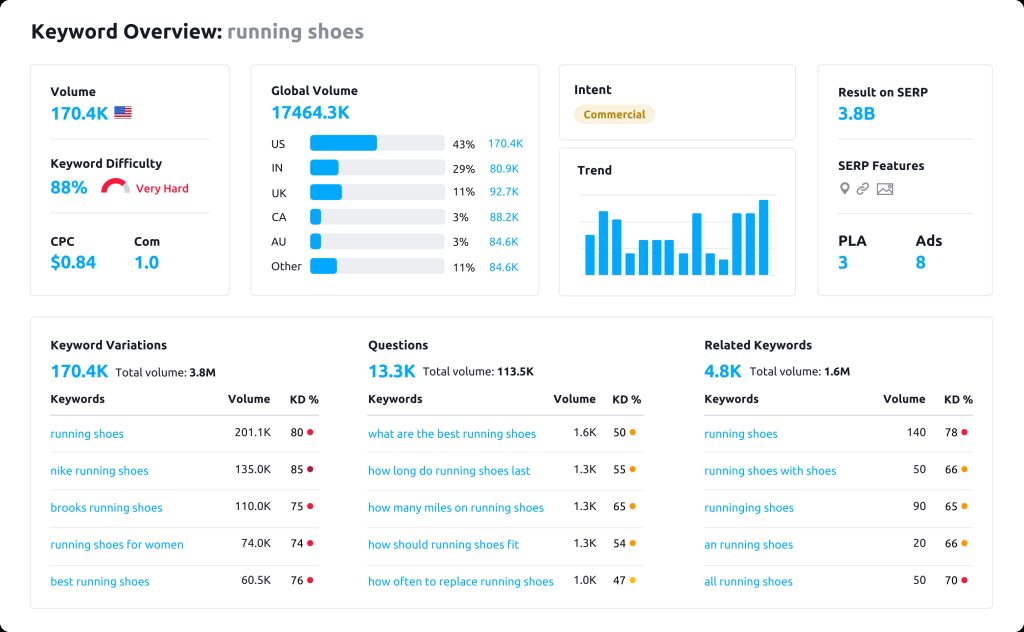
3. Use keyword research tools
Keyword research tools like Google Keyword Planner, Ubersuggest, and Moz Keyword Explorer can help you identify relevant keywords with high search volumes. These tools provide insights into how often people are searching for certain phrases or words.
4. Focus on long-tail keywords
Long-tail keywords are longer, more specific phrases that people use when conducting searches. They typically have lower search volumes but are less competitive than shorter, more general keywords.
By focusing on long-tail keywords, you have a better chance of ranking for those specific phrases and attracting highly targeted traffic to your website.
In conclusion, choosing the right keywords for on-page optimization takes some research and strategy. By identifying your target audience, researching competitors, using keyword research tools, and focusing on long-tail keywords, you can boost your rankings quickly and attract more traffic to your website.
What tools should I use to analyze my website’s on-page SEO?
As an SEO expert, I am frequently asked the question: “What tools should I use to analyze my website’s on-page SEO?” There are a plethora of great SEO tools on the market; however, there are three specific tools that always make it to the top of our list.
- Google Search Console. It is a free tool offered by Google. This tool allows you to view how your website appears in Google search results and provides valuable insights into your website’s performance. In addition, it offers data on click-through rates (CTR), number of impressions, and visibility metrics. By monitoring these key metrics, you can identify areas where your content may be lacking in order to improve the overall SEO of your website.
- Semrush. It is an all-in-one SEO tool that gives you a complete picture of on-page SEO health along with keyword research and link-building data. It offers an array of features including site audit, backlink analysis, organic traffic insights, competitor analysis, and much more. Semrush provides actionable insights which enable businesses to make better-informed decisions about their on-page optimization strategy.
- Ahrefs is one of the most popular SEO tools available in the market today. It’s an all-in-one solution that provides extensive competition analysis, keyword research, site crawling, and site audit features.
In conclusion, while there are many other noteworthy SEO tools available today for optimizing on-page SEO, On-Page.ai is undoubtedly one of the strongest contenders for improving on-page optimization efforts.




